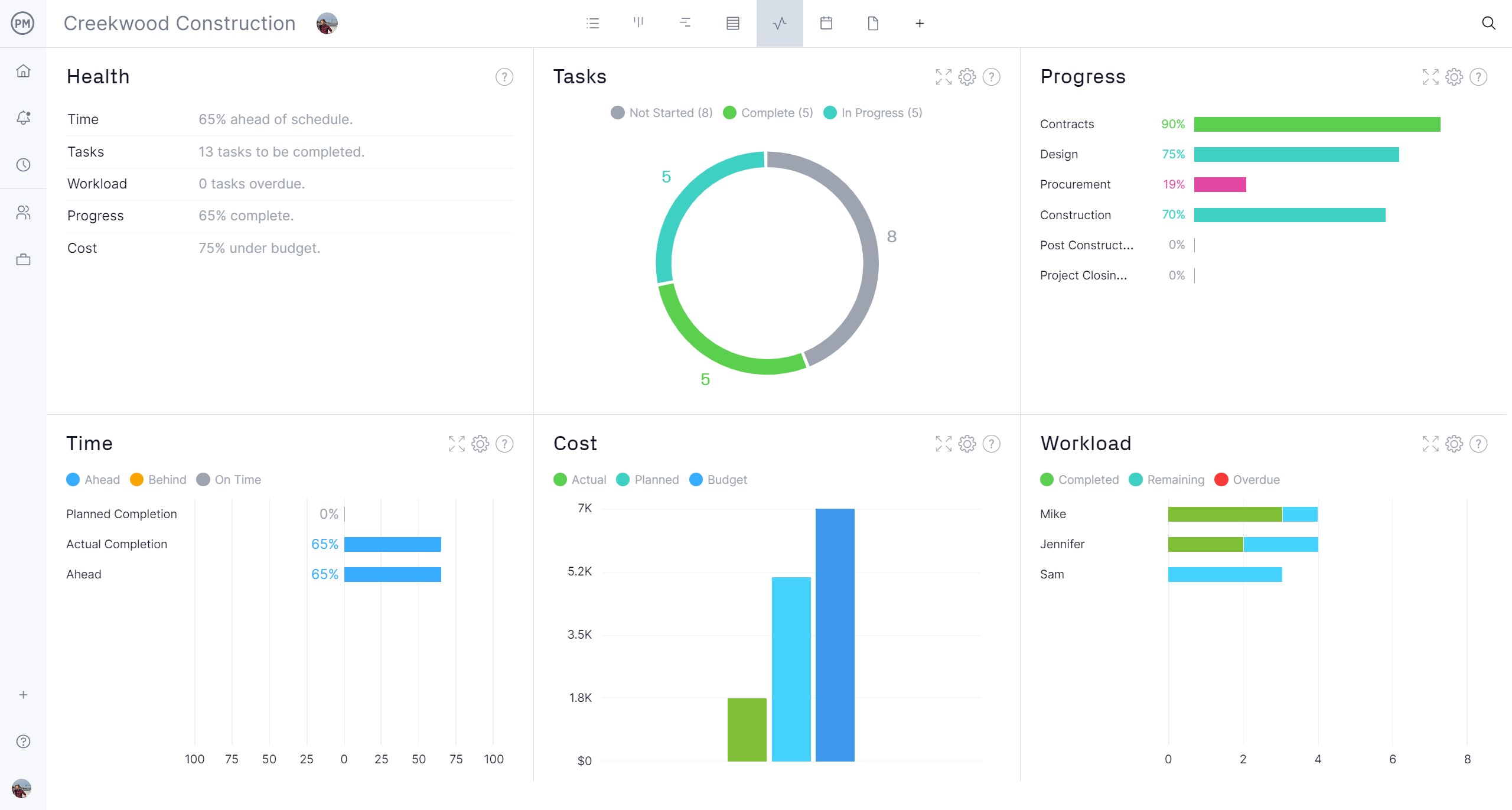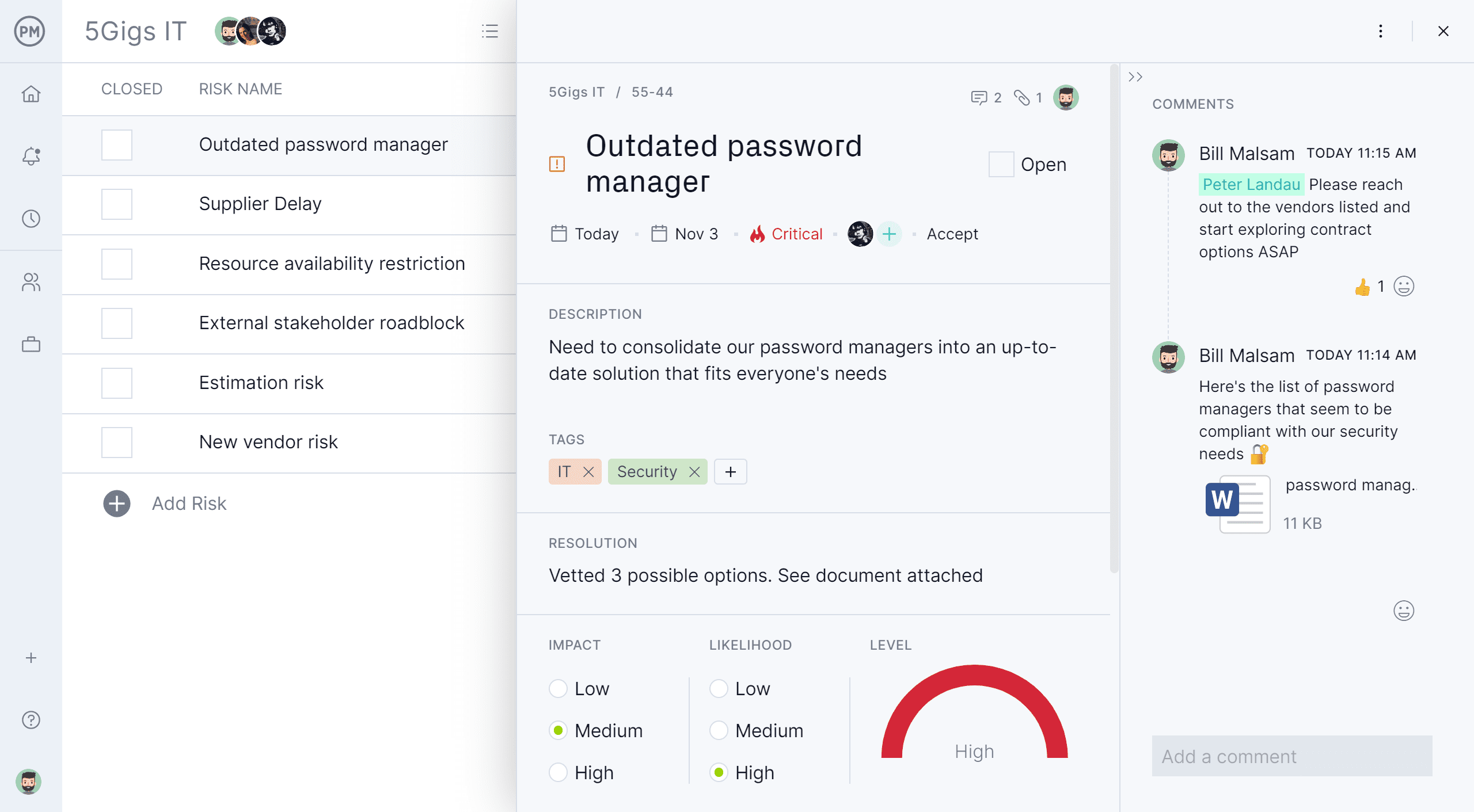“Nothing is constant except change” might be a cliche, but it’s true. Businesses would do well to have the saying tacked up to every wall in their offices. Knowing that change is always on the horizon means organizations can prepare for it with a change impact assessment.
To quickly adjust to change and lessen its negative effects requires understanding what change impact assessment is and then knowing how to conduct a change impact analysis. We’ll go over that and add a free change impact assessment template to facilitate the process.
What Is Change Impact Assessment?
Organizations use the change impact assessment process to understand how changes will affect people, processes, projects, etc. With that knowledge, organizations can mitigate the negative impact of those changes or take advantage of any position effects of the change. Change impact assessment is a key part of managing any organization or project.
After a change impact assessment and change impact analysis, organizations can make better decisions, allocate resources more effectively and reduce risks to the organization or project. Change impact assessment does this by analyzing the type and extent of the change and how it will affect different areas of the organization, such as its employees or teams, processes, technology, culture and competency.
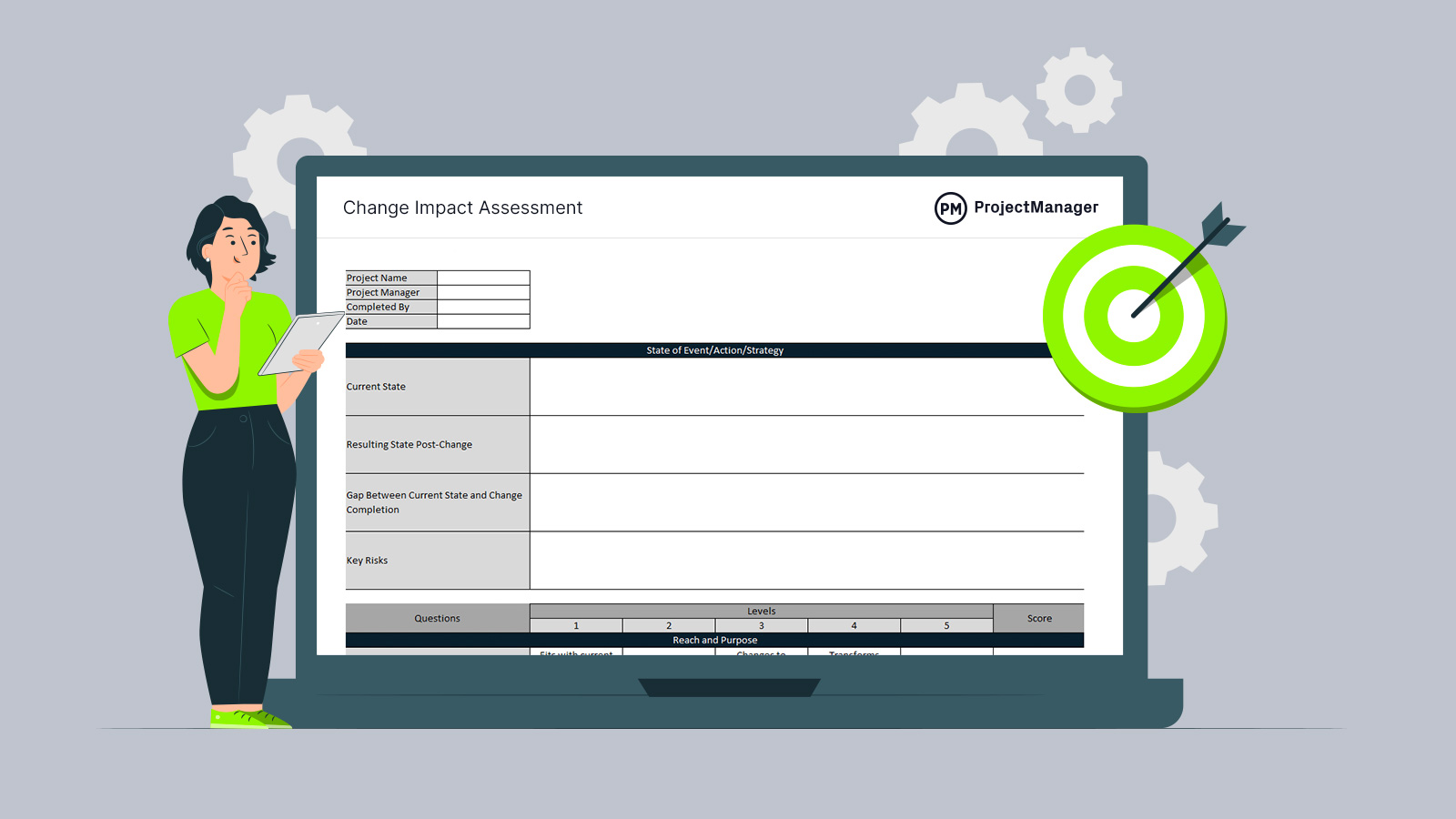
Get your free
Change Impact Assessment Template
Use this free Change Impact Assessment Template for Excel to manage your projects better.
Whether an organization is changing its systems, values, policies and operations or hiring a professional service to implement a change, help with relocation or the production of a new product or service, change impact assessment can make those changes as seamless as possible without disrupting business operations more than necessary.
Once the change impact assessment is done, then the product of implementing that change is next. Project management software helps facilitate that process more efficiently and avoids undue stress on the people, processes and organization.
ProjectManager is award-winning project and portfolio management software that can plan, schedule and track the implementation of changes in real time across multiple tools. Managers can plan and schedule on robust Gantt charts that link dependencies, filter for the critical path and set a baseline to track project variance in real time. Teams can execute their tasks on the list view or kanban boards to manage their workflows. Stakeholders get an overview of everything on the calendar view. Get started with ProjectManager today for free.
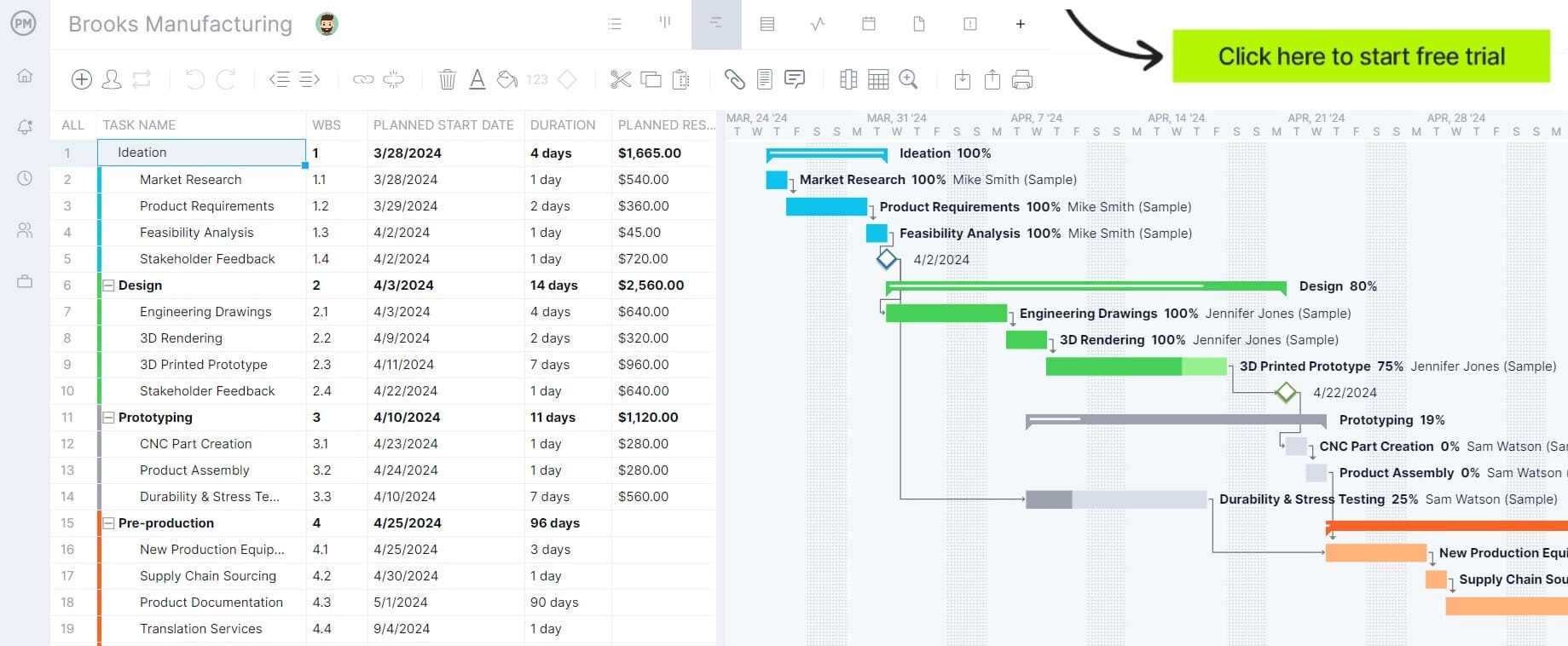
What Is a Change Impact Assessment Matrix?
A change impact assessment matrix is a tool that helps evaluate the possible effects of a change on a project or organization. It’s used to gauge the impact of change on different aspects of a project, such as quality, cost, time, resources and risks, or an organization, such as financials, processes, operating budget, etc.
Organizations or project managers can also use a change impact assessment matrix to identify areas that might require more or less communication, tracking or stakeholder engagement about the degree of change.
The change impact assessment matrix is often built in Excel and lists key changes in rows and relevant categories or stakeholders in columns. It can not only help to assess changes to an organization or project but also communicate those findings to management when informing them about the needed changes to the project’s status, schedule or process as well as changes that impact the organization.
How to Conduct a Change Impact Analysis
A change impact assessment matrix is used in the change impact analysis. Now that we understand the term and the tools, it’s important to outline the structure of conducting a change impact analysis. To do so, follow the following steps.
1. Map The Current State of the Operations
The current state of operations is a snapshot of how the organization operates before implementing the change. It’s important to map the current state of the operations from different perspectives, such as process, system, culture and people, to fully understand what the change will impact once it impacts the organization or project.
2. Define the Desired Future State
The future state is how the change will impact the various aspects of the organization or project. This can be a new way of working, technology, or organizational structure. The current state of the operations will then be compared to the future state of operations to identify what is changing, who will be impacted and what impacted users need to know. This information will inform the plan and communicate the actions to mitigate risks and maximize the benefits of the change.
3. Describe the Proposed Change
With the current and future state of the operations mapped out, it’s time to define the change that is being proposed and its scope. At this point, identify the impacted areas and analyze the impacts, considering factors such as dependencies, risks, opportunities, assumptions and constraints.
4. Make a Change Impact Assessment Matrix
With this information, the next step is creating a change impact assessment matrix. This involves identifying the change drivers, analyzing the change impacts, evaluating the change readiness and developing the change plan. Further down in the blog, there’s a link to download a free change impact assessment template, which can be used for this step.
5. Estimate Resource Requirements and Make a Budget
Once the change impact assessment is complete, the planning to implement that change becomes paramount. This planning begins with estimating the resources that will be required to implement the change. Resources can be people, tools, equipment or anything needed to execute the project and deliver the change. An estimation of resource requirements will inform the budget for the project, too.
6. Make a Timeline for the Implementation of the Change
Once the scope of the change has been defined, resources estimated and a budget in place, the project now must be scheduled on a timeline. A timeline captures the entire project from beginning to end, with every task populated on that timeline, including its start and end dates, which indicate its estimated duration. It’s a good idea to determine the key performance indicators (KPIs) that will be used to measure the project’s success and track its progress.
Change Impact Assessment Example
There are many examples of a change impact assessment. While some changes can be scheduled, such as the implementation of new tools and processes, others are unexpected. Either way, they must be quickly assessed and dealt with to mitigate risk and take advantage of opportunities.
Some examples of change impact assessment include mergers, appointing new leadership, developing processes that focus on the client or implementing new technology and business models. But anything that changes business as usual changes and requires a change impact assessment to clearly understand that change and successfully implement it.
In simple terms, an example of a change impact assessment is comparing two states, the current state and the future state after the change. Whatever the trigger for that change, the change impact assessment identifies what is changing, who is impacted and what those impacted need to know.
Change Impact Assessment Template
Use this free change impact assessment template when identifying organizational and project changes. This change impact assessment template allows users to define the current state of the operations or projects, the post-change state, the gap between the two and key risks.
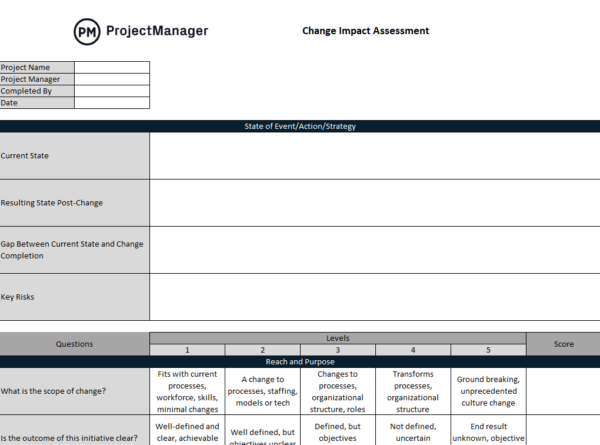
The second half of the change impact assessment template lists a series of questions to help understand everything from the scope of the change to the budget needed to implement that change. This change impact assessment matrix is fully customizable allowing users to add or subtract from it as needed.
Benefits of Conducting Change Impact Assessment
Changes can’t be avoided, however, they can be managed. Without a change impact assessment, changes happen and organizations or projects are unprepared. This is when a change will have a greater negative impact. By planning, the severity of the change can be mitigated.
Other advantages of conducting a change impact assessment are that it helps businesses see where change will have the greatest impact and also those areas of the organization or project where the change will be least impactful.
As noted, the change impact assessment will determine the scope and scale of the change. It also drives discussions with stakeholders, which helps to keep them informed on the change, its impact and the plan that will be put in place to either implement the change or respond to it.

More Free Change Management Templates
A change impact assessment matrix is only one of many templates that can help manage change in an organization or project. There are over 100 free project and portfolio management templates available to download on our site covering all aspects of managing projects across many industries. The following are a few that can help with change management.
Change Request Form Template
A change request form is used by project managers to prepare, equip and support change. Use this free change request form template for Word to describe the change and the reason for the request, as well as how the change will impact everything from scope to cost.
Change Log Template
Use this change log template for Excel to document changes as they occur and then track them throughout the project. This free template will give project managers greater visibility to monitor the mitigation of a project change.
Change Order Form Template
In construction, the change order form captures any modifications to the scope of work in a project. This free change order form template for Excel can be used to revise the project schedule and budget and amend the contract.
How ProjectManager Helps With Change Management
Most of these templates will only get a user so far. They might help understand the impact of a change and how to respond to it, but once action is taken, templates are more trouble than they’re worth. They’re not collaborative documents and every change has to be manually added to the static document. Plus, there’s no way to track changes and responses in real time. Project managers are always going to be one step behind. ProjectManager is award-winning project and portfolio management software that has specific task cards to track risk and changes in real time, plus tools to monitor timelines, costs and progress while keeping the project team and stakeholders informed.
Monitor Timelines, Costs and Progress With Real-Time Dashboards
Once the change impact assessment is complete and the plan is implemented, managers will monitor and control the execution to ensure that it’s progressing as planned. Get a high-level overview of progress, cost, workload and more with real-time dashboards. They constantly collect live data and display it in easy-to-read graphs and charts. Plus, there’s no lengthy and complicated setup as with lightweight alternatives. There are also customizable reports on project and portfolio status, timesheets, variance and more, which can be shared with stakeholders to keep them informed on progress.

Manage Change and Risk on Task Cards
There is a risk inherent in any change. Managers can identify those changes and risks on task cards that can calculate their impact on the project. These task cards can be assigned to team members, tags can be added to make them easily discoverable and descriptions and resolution for the change or risk can also be added to the card. For risks, there’s even a way to note the likelihood of it occurring. All this allows for the management of change and associated risks so that organizations and projects can avoid negative impacts.

Related Change Management Content
Change management is a large subject that goes beyond a change impact assessment. For those who are curious to learn more about change management as it relates to project management, there are lots of resources available on our site. We published blogs throughout the week and have guides, ebooks, tutorial videos and free templates. The following are some of the change management pieces that we’ve recently published.
- Free Change Management Templates for Excel and Word
- What Is Change Management? Process & Models Explained
- What Is Change Control in Project Management?
- Change Control Board: Roles, Responsibilities & Processes
- How to Make a Change Management Plan (Templates Included)
ProjectManager is online project and portfolio management software that connects teams whether they’re in the office, out in the field or anywhere in the world. They can share files, comment at the task level and stay up to date with email and in-app notifications. Join teams at Avis, Nestle and Siemens who use our software to deliver successful projects. Get started with ProjectManager today for free.

